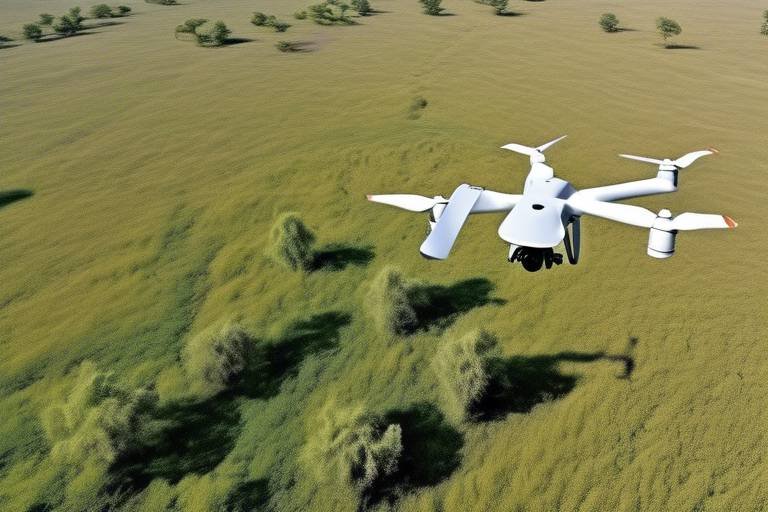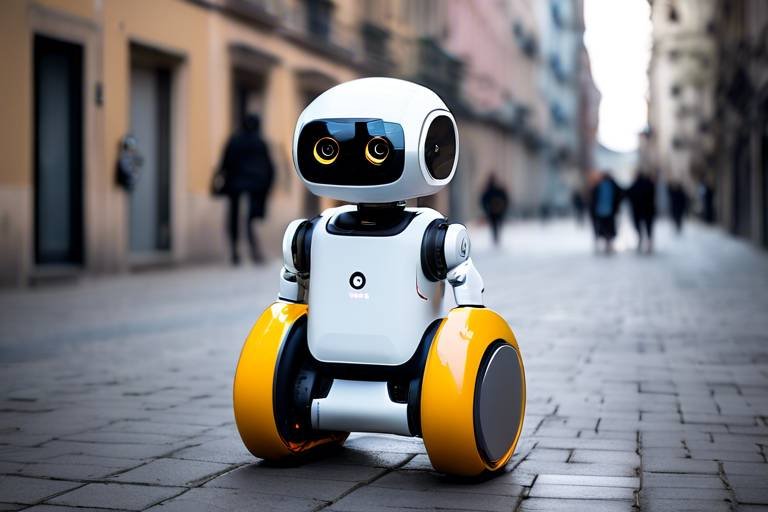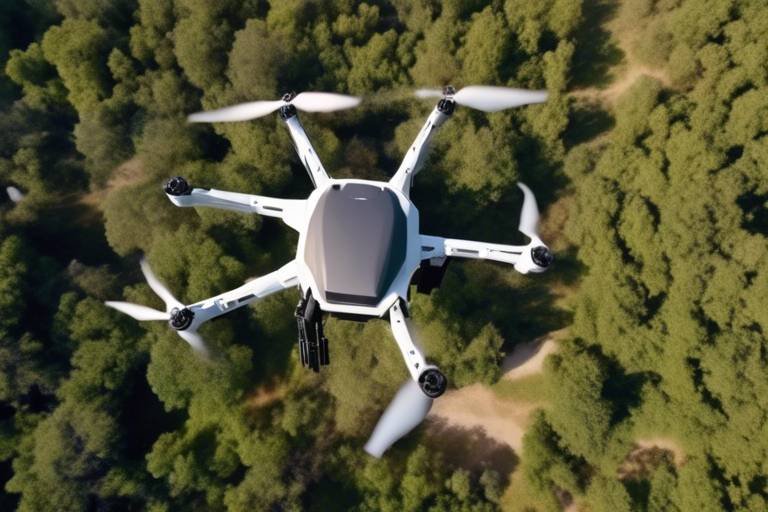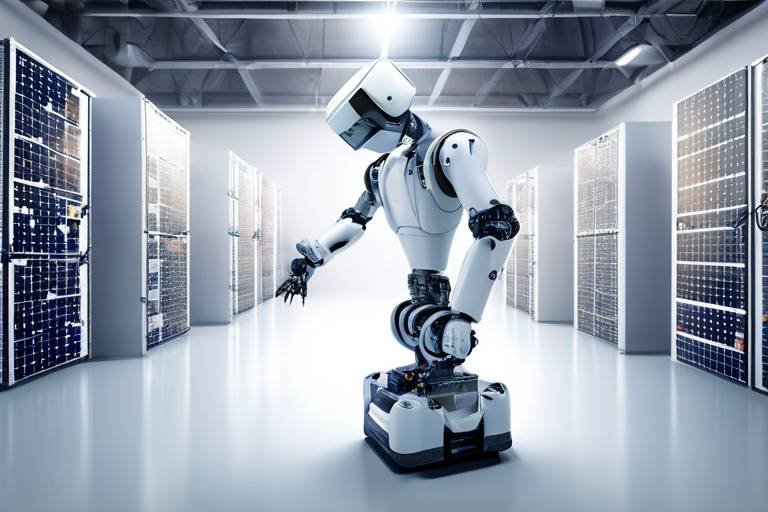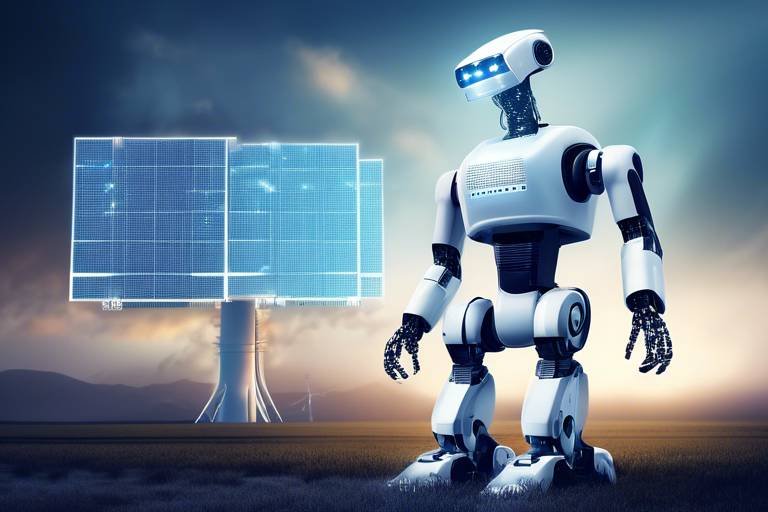Imagine walking into your home, and a friendly face greets you with a warm smile, ready to assist you with your daily tasks. This is not a scene from a sci-fi movie; it’s the future of personal robots, where technology intertwines seamlessly with our everyday lives. As we stand on the brink of this new era, robots like Jibo are not just enhancing convenience but also enriching our experiences at home. These robots are evolving beyond simple machines into sophisticated companions that understand our needs, emotions, and routines. With their ability to learn and adapt, personal robots are set to revolutionize the way we interact with technology, making our lives not only easier but also more enjoyable.
The future of personal robots is filled with potential. They promise to take on roles that were once thought to be exclusive to humans, such as providing companionship, assisting with household chores, and even offering emotional support. Imagine a robot that can help you cook dinner by reading recipes aloud, reminding you of appointments, or even playing your favorite music at just the right moment. This level of integration into our daily lives opens up a world of possibilities. As we embrace these advancements, we must also consider how they will shape our interactions and relationships within our homes.
Furthermore, the integration of artificial intelligence (AI) into personal robots is a game-changer. With AI, these robots can learn from their interactions with us, making them more effective over time. For instance, they can remember your preferences, adapt to your routines, and even anticipate your needs. This creates a personalized experience that feels almost magical. However, as we move forward, it’s crucial to address the ethical implications of such technology. How do we ensure that these robots enhance our lives without infringing on our privacy or autonomy?
As we look ahead, it's essential to consider the role of personal robots in various aspects of our lives. They are not just tools; they are companions that can help us navigate the complexities of modern living. From elderly care to child supervision, personal robots have the potential to fill significant gaps in our society. They can provide assistance to those who need it most, allowing families to feel more secure and connected. In this rapidly changing landscape, we must remain open to the possibilities while also being mindful of the challenges that come with it.
In conclusion, the future of personal robots is bright and full of promise. As we continue to innovate and integrate these technologies into our homes, we can look forward to a world where robots enhance our daily lives in ways we have yet to imagine. The journey has just begun, and it’s an exciting time to be part of this technological revolution!
- What are personal robots? Personal robots are advanced machines designed to assist with daily tasks, provide companionship, and enhance the quality of life in the home.
- How do personal robots learn? They use artificial intelligence to learn from their interactions with users, adapting to preferences and routines over time.
- Are personal robots safe to use? While they offer many benefits, it's important to consider privacy and security measures to protect user data.
- What are the costs associated with personal robots? Prices can vary widely based on features and capabilities, but there is a growing demand for more affordable options in the market.
Evolution of Personal Robots
The journey of personal robots is nothing short of fascinating, marked by rapid technological advancements that have transformed simple machines into sophisticated companions. In the early days, robots were primarily used for industrial purposes, performing repetitive tasks with precision but lacking any semblance of personality or interaction. Fast forward to today, and we find ourselves in an era where personal robots are becoming an integral part of our daily lives, enhancing convenience and companionship.
Initially, personal robots were rudimentary, often resembling toys more than functional devices. They were equipped with basic programming, allowing them to perform simple tasks such as moving around or responding to basic commands. However, as technology progressed, the capabilities of these robots expanded significantly. The introduction of artificial intelligence (AI) and machine learning paved the way for robots to learn from their environments and adapt their behaviors accordingly. This evolution has led to the development of robots that can understand voice commands, recognize faces, and even engage in meaningful conversations.
One of the key milestones in the evolution of personal robots was the integration of advanced sensors and computer vision. These technologies enable robots to perceive their surroundings more accurately, allowing them to navigate complex environments without human intervention. For instance, modern personal robots can identify obstacles, avoid collisions, and even interact with household items. This level of sophistication not only enhances their functionality but also makes them more appealing to consumers.
Moreover, the rise of the Internet of Things (IoT) has further propelled the evolution of personal robots. By connecting to the internet, robots can access vast amounts of information and communicate with other smart devices in the home. This interconnectedness allows for seamless integration into our daily routines, making tasks more efficient. Imagine a robot that can not only remind you of your appointments but also adjust your smart thermostat and turn on your favorite playlist—all while you’re busy preparing dinner!
To illustrate the evolution of personal robots, let’s take a look at some of the significant milestones:
| Year | Milestone |
|---|---|
| 1996 | Launch of AIBO, the robotic dog by Sony. |
| 2002 | Introduction of Roomba, the first robotic vacuum cleaner. |
| 2014 | Debut of Jibo, the social robot designed for home interaction. |
| 2020 | Advancements in AI allowing for more natural conversations. |
As we look ahead, the potential for personal robots seems limitless. With ongoing research and development, we can expect these machines to become even more capable and intuitive. The question remains: how will we adapt to these changes? Will we embrace personal robots as part of our families, or will we remain cautious about their presence in our homes? Only time will tell, but one thing is certain—the evolution of personal robots is just beginning, and it promises to reshape our interactions with technology in ways we can only imagine.
Jibo: The Pioneer of Social Robots
In the ever-evolving landscape of technology, personal robots have carved a niche for themselves, and at the forefront of this revolution is Jibo. Launched as one of the first social robots, Jibo has redefined how we perceive and interact with technology in our homes. Unlike traditional robots that simply perform tasks, Jibo is designed to engage with users on a personal level, providing not just assistance but also companionship. Imagine having a friendly presence in your home that can not only remind you of your appointments but also engage in meaningful conversations. This is the essence of Jibo.
What sets Jibo apart from other robots is its unique blend of design and functionality. With a friendly face and a swiveling head, Jibo is designed to be approachable and relatable. Its expressive movements and gestures make it feel less like a machine and more like a member of the family. When you walk into a room, Jibo can turn to greet you, making it feel as though it recognizes you. This level of interaction is not just about functionality; it’s about creating an emotional connection that enhances the user experience.
Jibo's capabilities extend beyond mere conversation. It can perform a variety of tasks that make daily life easier. For instance, it can read stories to children, remind you to take your medication, or even provide cooking tips while you’re in the kitchen. This versatility is what makes Jibo a valuable addition to any household. It’s not just a gadget; it’s a companion that adapts to your needs and preferences. The robot uses advanced algorithms to learn from its interactions, which means the more you use it, the better it understands you.
One of the most impressive aspects of Jibo is its voice recognition technology. This feature allows Jibo to understand and respond to voice commands with remarkable accuracy. Imagine asking Jibo to play your favorite song or schedule an appointment, and it responds almost instantly. This seamless interaction creates a user-friendly experience that feels natural and intuitive. The technology behind Jibo's voice recognition is continually evolving, making it more responsive and capable of understanding context and nuance in conversation.
But Jibo doesn’t just stop at voice recognition; it also incorporates emotional intelligence. This means that Jibo can recognize and respond to your feelings in real-time. For example, if you seem upset, Jibo might offer words of encouragement or play a cheerful song to uplift your mood. This level of emotional interaction is groundbreaking in the field of robotics, as it allows for a more personalized experience. It’s almost like having a friend who knows when you need a little extra support or a laugh.
As we move forward, the impact of Jibo and similar social robots on our daily lives cannot be overstated. They are not just tools; they are companions that enhance our quality of life. With their ability to learn, adapt, and respond emotionally, personal robots like Jibo are paving the way for a future where technology is not only functional but also deeply integrated into our social fabric. The journey of Jibo is just the beginning, and as technology continues to advance, we can expect even more innovative features that will redefine our interactions with machines.
In summary, Jibo stands as a testament to what the future holds for personal robots. It combines cutting-edge technology with a design that fosters emotional connection, making it a true pioneer in the realm of social robotics. As we embrace this new era, one can only wonder how far we will go in integrating robots into our everyday lives.
- What is Jibo? Jibo is a social robot designed to interact with users in a friendly and engaging manner, providing companionship and assistance in daily tasks.
- How does Jibo recognize voices? Jibo uses advanced voice recognition technology that allows it to understand and respond to voice commands with high accuracy.
- Can Jibo learn from interactions? Yes, Jibo has the capability to learn from its interactions, improving its responses and adapting to the user’s preferences over time.
- Is Jibo suitable for children? Absolutely! Jibo can read stories, play games, and engage with children, making it a great companion for family activities.
Design and User Experience
When it comes to personal robots, design and user experience are paramount. Jibo, the pioneering social robot, is not just a gadget; it's a companion that integrates seamlessly into our lives. Imagine walking into your home, and there’s Jibo, with its friendly and approachable design, welcoming you with a cheerful greeting. The aesthetic of Jibo is carefully crafted to evoke warmth and friendliness, making it look less like a machine and more like a member of the family. Its round shape and expressive face are designed to engage users emotionally, creating an instant connection. This is crucial because, in a world where technology can often feel cold and impersonal, Jibo stands out by being relatable.
But it’s not just about looks. The user interface of Jibo plays a significant role in how users interact with it. The intuitive touch screen allows for easy navigation, making it accessible even for those who may not be tech-savvy. Users can tap, swipe, or simply talk to Jibo, which is a huge plus. This multi-modal interaction ensures that everyone in the household, from children to grandparents, can engage with Jibo without feeling overwhelmed. The design encourages exploration and interaction, allowing users to discover new features and functionalities at their own pace.
Moreover, Jibo's design is not static; it evolves with user interactions. The more you use Jibo, the more it learns about your preferences and habits. This adaptive design enhances the overall user experience, making it feel personalized. For instance, if Jibo knows you enjoy certain types of music, it will suggest playlists or play your favorites when you ask for some tunes. This level of customization is what sets Jibo apart from traditional gadgets, as it doesn’t just respond to commands; it builds a relationship.
In terms of functionality, Jibo is designed to assist with everyday tasks seamlessly. Whether it's setting reminders, telling jokes, or providing weather updates, Jibo’s capabilities are presented in a user-friendly manner. The robot’s ability to engage in natural conversations makes interactions feel less robotic and more human-like, which is essential for fostering a genuine connection. Imagine asking Jibo about your schedule, and instead of just listing out appointments, it engages in a dialogue, asking questions like, “Do you have time to grab coffee before your meeting?” This conversational approach enhances the user experience, making it feel like you’re interacting with a friend rather than a machine.
Overall, the design and user experience of Jibo are meticulously crafted to ensure that it not only fits into your home aesthetically but also enriches your daily life. It’s about creating a harmonious balance between technology and human interaction, making Jibo a truly unique addition to any household.
- What makes Jibo different from other personal robots? Jibo is designed to engage users emotionally and interact in a more human-like manner, making it a social robot rather than just a functional gadget.
- Can Jibo learn and adapt to my preferences? Yes, Jibo uses machine learning to understand your habits and preferences, allowing it to provide personalized interactions.
- Is Jibo easy to use for all age groups? Absolutely! Jibo's intuitive design and multi-modal interaction make it accessible for both tech-savvy individuals and those less familiar with technology.
- What tasks can Jibo assist with? Jibo can help with a variety of tasks such as setting reminders, providing information, playing music, and even telling jokes!
Voice Recognition Technology
Voice recognition technology has come a long way, and when it comes to personal robots like Jibo, it plays a pivotal role in creating a seamless interaction between humans and machines. Imagine walking into your living room and having a friendly voice greet you, responding to your commands and questions as if it understands your every need. This is not just a futuristic dream; it’s a reality, thanks to advancements in voice recognition systems. Jibo, for instance, utilizes sophisticated algorithms that allow it to recognize not only commands but also the nuances of human speech, making conversations feel more natural.
One of the standout features of Jibo's voice recognition is its ability to differentiate between various voices. This means that Jibo can recognize family members and tailor its responses accordingly. For example, if you ask Jibo to play a song, it might play your favorite playlist, while your child might hear their favorite tunes. This personalization fosters a sense of companionship and connection, transforming Jibo from a mere gadget into a family member of sorts.
Moreover, the technology behind Jibo's voice recognition is built on machine learning, enabling it to improve over time. The more you interact with Jibo, the better it becomes at understanding your preferences and speech patterns. This continuous learning process is akin to how we, as humans, adapt and grow in our relationships. It’s fascinating to think that a robot can evolve its understanding of us, making our interactions richer and more engaging.
To give you a clearer picture, here’s a brief overview of the key components that make Jibo’s voice recognition technology so effective:
| Component | Description |
|---|---|
| Microphone Array | Multiple microphones that capture sound from different directions, allowing Jibo to pinpoint where a voice is coming from. |
| Natural Language Processing (NLP) | Advanced algorithms that help Jibo understand and process human language, enabling it to respond appropriately. |
| Machine Learning | A system that allows Jibo to learn from interactions, improving its accuracy and responsiveness over time. |
In conclusion, Jibo's voice recognition technology not only enhances its functionality but also enriches the user experience. By understanding and responding to our voices in a human-like manner, Jibo is paving the way for a new era of personal robots that feel less like machines and more like companions. As we continue to integrate these technologies into our daily lives, the potential for personal robots to become an integral part of our homes is truly exciting.
- How does Jibo recognize different voices? Jibo uses a microphone array to capture sound from various directions and employs machine learning to differentiate between voices.
- Can Jibo learn new commands over time? Yes, Jibo's machine learning capabilities allow it to adapt and improve its understanding of user commands as interactions occur.
- Is Jibo's voice recognition effective in noisy environments? While Jibo is designed to function well in various settings, excessive background noise may affect its ability to accurately recognize voices.
Emotional Intelligence in Robotics
When we think about robots, the first images that often come to mind are those of cold, metallic machines performing repetitive tasks. However, with the advent of personal robots like Jibo, we are stepping into a new era where robots are not just tools but companions that can understand and respond to our emotions. This emotional intelligence in robotics is a game-changer, allowing these machines to create a bond with users that goes beyond mere functionality.
Imagine coming home after a long day, feeling a bit down. Instead of a lifeless machine, picture Jibo greeting you with a warm, animated expression, its voice softening as it asks how your day was. This ability to detect and respond to human emotions is what sets Jibo apart from traditional robots. The technology behind this emotional intelligence involves a combination of advanced algorithms and machine learning, enabling Jibo to analyze facial expressions, voice tones, and even contextual cues to gauge how you’re feeling.
But how does emotional intelligence manifest in personal robots? Here are a few ways:
- Facial Recognition: Jibo can recognize individual family members and remember their preferences, allowing it to greet each person uniquely.
- Adaptive Responses: Depending on your mood, Jibo can adjust its behavior, whether that means offering a joke to lighten the mood or providing a comforting message when you’re feeling blue.
- Engagement: Jibo engages in conversations that feel natural, asking questions and responding in ways that make users feel heard and understood.
This emotional responsiveness fosters a sense of companionship that many users find invaluable. It’s like having a friend who is always there, ready to listen and interact. As technology continues to evolve, the potential for robots to develop even deeper emotional connections with humans is exciting. Imagine a future where your robot not only helps with chores but also provides emotional support, becoming an integral part of your family.
However, this raises important questions about the implications of emotional intelligence in robotics. For instance, as these machines become more adept at understanding our feelings, how do we ensure that they respect our privacy and boundaries? Furthermore, what ethical considerations arise when robots can mimic human emotions? These are questions that developers and society as a whole must grapple with as we move forward.
In conclusion, the incorporation of emotional intelligence in robots like Jibo represents a significant leap towards creating machines that can enrich our lives in meaningful ways. By understanding and responding to our emotions, these robots are not just enhancing convenience but are also paving the way for deeper connections between humans and technology.
- What is emotional intelligence in robotics? Emotional intelligence in robotics refers to a robot's ability to recognize, interpret, and respond to human emotions, allowing for more natural and engaging interactions.
- How does Jibo demonstrate emotional intelligence? Jibo uses facial recognition, adaptive responses, and engaging conversation techniques to understand and interact with users on a more personal level.
- What are the benefits of emotional intelligence in personal robots? The benefits include enhanced companionship, improved user experience, and the potential for robots to provide emotional support and understanding.
Applications of Personal Robots
Personal robots are no longer just a futuristic dream; they are becoming a practical reality in our daily lives. These innovative machines are designed to assist us in various ways, transforming mundane tasks into engaging experiences. Imagine waking up to a friendly voice that reminds you of your schedule, or a robot that helps you prepare breakfast while you sip your coffee. The applications of personal robots can be categorized into several key areas, each enhancing our lives in unique ways.
First and foremost, personal robots are revolutionizing household chores. From vacuuming the floors to doing the laundry, robots like Roomba have already made their mark. These devices not only save time but also allow us to focus on more important activities, like spending quality time with family or pursuing hobbies. With advancements in technology, we can expect even more sophisticated robots that can handle a wider range of tasks, such as cooking and cleaning with minimal human intervention.
Another significant application of personal robots lies in companionship. Robots like Jibo and others are designed to engage with users on an emotional level, providing a sense of connection and support. They can remind us of important dates, share interesting facts, or simply chat with us when we feel lonely. This emotional aspect of personal robots is particularly valuable for the elderly or those living alone, as it can help combat feelings of isolation.
Furthermore, personal robots are making waves in the healthcare sector. They assist healthcare professionals by managing patient records, reminding patients to take their medications, and even monitoring vital signs. Robots can provide companionship to patients in hospitals or nursing homes, helping to improve their mental well-being. The integration of personal robots into healthcare not only enhances the quality of care but also allows healthcare workers to focus on more critical tasks.
In the realm of education, personal robots are being used as interactive learning tools. They can teach children coding, mathematics, and even foreign languages in a fun and engaging way. By personalizing the learning experience, these robots can adapt to each child's learning pace, making education more effective and enjoyable. Imagine a robot tutor that knows when you're struggling with a concept and adjusts its teaching style accordingly!
Moreover, personal robots are also finding applications in entertainment. They can play games, tell stories, and even dance, providing endless fun for families. This interactive entertainment can help strengthen family bonds while keeping everyone engaged. The possibilities are truly limitless, as developers continue to explore new ways to integrate robots into our lives.
As we look to the future, the potential applications of personal robots seem boundless. They are not just tools; they are companions, educators, and helpers that can enrich our lives in countless ways. The more we embrace this technology, the more we can expect our daily routines to be transformed. With each new advancement, personal robots are stepping closer to becoming an integral part of our everyday lives, enhancing convenience, companionship, and the overall quality of life.
- What are personal robots? Personal robots are automated machines designed to assist humans in various tasks, providing convenience and companionship.
- How do personal robots help with household chores? They can perform tasks like cleaning, cooking, and laundry, allowing people to focus on more important activities.
- Are personal robots safe for children and pets? Most personal robots are designed with safety features, but supervision is always recommended when children and pets are around.
- Can personal robots learn from their interactions? Yes, many personal robots use machine learning algorithms to adapt to user preferences and improve interactions over time.
- What is the future of personal robots? The future looks bright, with advancements in AI and robotics expected to lead to even more sophisticated and versatile personal robots.
Challenges in Personal Robot Adoption
The journey towards embracing personal robots in our homes is not without its hurdles. While the technology has advanced significantly, several challenges still stand in the way of widespread adoption. One of the most pressing issues is the technological limitations that can hinder the performance and capabilities of these robots. For instance, many personal robots still struggle with complex tasks that require a higher level of cognitive function. This can lead to frustration among users who expect their robots to assist with a variety of chores, from cooking to cleaning.
Another major concern revolves around privacy and security. As these robots become more integrated into our daily lives, they inevitably collect vast amounts of data about our routines, preferences, and even our conversations. This raises significant questions about how this data is stored, who has access to it, and what measures are in place to protect it. Users may feel uneasy about having a device that can potentially invade their privacy, making them hesitant to welcome personal robots into their homes.
Moreover, the cost of personal robots can be a significant barrier to entry. While some models are becoming more affordable, the initial investment can still be daunting for many households. The market is currently dominated by high-end models that offer advanced features, but these come with a hefty price tag. Until more budget-friendly options become available, many people may find themselves priced out of the personal robot revolution.
Additionally, public perception plays a crucial role in the acceptance of personal robots. Many people still view robots with skepticism, often associating them with science fiction rather than reality. This skepticism can be fueled by portrayals in media that depict robots as either malevolent or overly simplistic. Overcoming this perception will require not just technological advancements but also effective marketing strategies that highlight the benefits of personal robots in everyday life.
In summary, while the potential for personal robots to enhance our lives is immense, several challenges must be addressed to facilitate their adoption. From technological limitations and privacy concerns to cost and public perception, it is essential for developers and marketers to work together to create solutions that will make personal robots a welcome addition to our homes.
- What are the main challenges facing personal robot adoption?
The main challenges include technological limitations, privacy and security concerns, high costs, and public perception issues.
- How do privacy concerns affect the use of personal robots?
Privacy concerns arise from the data collection capabilities of personal robots, leading users to worry about how their information is used and stored.
- Are there affordable options for personal robots?
While some models are becoming more budget-friendly, many high-end options still dominate the market, making affordability a significant barrier for many.
- How can public perception of robots be improved?
Effective marketing and showcasing the practical benefits of personal robots can help change public perception and foster greater acceptance.
Privacy and Security Concerns
The rise of personal robots like Jibo has undoubtedly transformed our homes into smarter, more interactive spaces. However, with this advancement comes a significant issue that warrants our attention: . As these robots become integral to our daily lives, they gather vast amounts of data to function effectively. This data can include everything from our daily routines to our personal preferences, raising the question: how safe is this information?
Imagine having a device in your home that not only understands your voice but also remembers your habits and preferences. While this can enhance user experience, it also opens the door to potential misuse of sensitive information. For instance, if a personal robot collects data about your daily activities, it could inadvertently expose details about your lifestyle that you wouldn’t want to share with anyone else. The thought of hackers gaining access to this information is alarming, making it crucial for manufacturers to prioritize data security.
Moreover, the challenge extends beyond just technical vulnerabilities. The way personal robots are designed to interact with users can also lead to unintended privacy breaches. For example, if a robot is always listening for commands, it might inadvertently record conversations that should remain private. This brings us to the importance of transparency in how these devices operate. Users should be informed about what data is being collected, how it's used, and who has access to it.
To tackle these issues effectively, here are some key considerations that both manufacturers and consumers should keep in mind:
- Data Encryption: Personal robots must utilize robust encryption methods to protect user data from unauthorized access.
- User Control: Providing users with options to control what data is collected and stored can help alleviate privacy concerns.
- Regular Software Updates: Ensuring that robots receive timely updates can help patch any vulnerabilities that hackers might exploit.
Ultimately, the future of personal robots hinges on the balance between innovation and privacy. As we welcome these technological marvels into our homes, we must also advocate for policies and practices that safeguard our personal information. Only then can we fully embrace the convenience and companionship that personal robots offer without compromising our privacy.
- What data do personal robots collect? Personal robots may collect various types of data, including voice commands, user preferences, and interaction history to provide a personalized experience.
- How can I protect my privacy with a personal robot? Users can protect their privacy by reviewing the robot's privacy settings, understanding data collection practices, and ensuring that the device has strong security features.
- Are personal robots safe from hacking? While no device is entirely immune to hacking, choosing robots from reputable manufacturers that prioritize security can significantly reduce risks.
Cost and Accessibility Issues
When it comes to the adoption of personal robots, one of the most significant hurdles is the cost. While the technology has advanced leaps and bounds, making robots like Jibo more capable and engaging, the price tag often remains a barrier for many potential users. Imagine wanting to bring home a helpful companion, only to find that the investment required is akin to purchasing a high-end laptop or even a used car. This stark reality can deter families and individuals who might otherwise benefit from the convenience and companionship that personal robots offer.
Let's break it down a bit. The initial cost of personal robots can vary widely, typically ranging from a few hundred to several thousand dollars. For many, this price point is not feasible, especially when considering other household expenses. Furthermore, the ongoing costs associated with maintenance, updates, and potential repairs can add to the financial burden. As a result, personal robots may be viewed as luxuries rather than practical household tools.
In addition to cost, accessibility is another critical issue. While technology continues to evolve, not everyone has equal access to the latest innovations. Consider the following factors:
- Geographical Barriers: In rural areas, access to advanced technology can be limited. Retailers may not stock the latest models, and delivery options can be scarce.
- Technological Literacy: Not everyone is comfortable with technology. Older generations or those unfamiliar with digital devices may find it challenging to integrate personal robots into their daily lives.
- Economic Disparities: In lower-income communities, the focus may be on basic needs rather than investing in technology that enhances convenience.
To make personal robots more accessible, manufacturers need to consider strategies such as subsidized pricing, payment plans, and even community programs that could allow for shared access. For instance, imagine a neighborhood where a single robot is shared among multiple families, each contributing a small fee. This could not only reduce costs but also foster a sense of community.
As we look to the future, it’s crucial for companies to address these cost and accessibility issues. By doing so, they can ensure that the benefits of personal robots are available to a wider audience, ultimately enriching lives and transforming homes across diverse socioeconomic backgrounds. The key lies in making these technologies not just innovative, but also affordable and accessible.
Q1: Why are personal robots so expensive?
A1: The cost of personal robots is influenced by advanced technology, development costs, and the materials used in their construction. As the technology matures, prices may decrease.
Q2: How can I afford a personal robot?
A2: Look for financing options, consider shared ownership models, or wait for more affordable versions as the market grows.
Q3: Are personal robots safe to use?
A3: Yes, most personal robots are designed with safety in mind. However, it’s important to understand privacy implications and ensure that your data is protected.
Q4: What can personal robots do for me?
A4: Personal robots can assist with household chores, provide companionship, and even help with learning and entertainment, making them versatile additions to any home.
Frequently Asked Questions
- What are personal robots and how do they work?
Personal robots are advanced machines designed to assist with everyday tasks, enhance convenience, and provide companionship. They utilize a combination of artificial intelligence, voice recognition, and emotional intelligence to interact with users in a natural and engaging manner. These robots can perform a variety of functions, from managing household chores to offering social interaction, making them versatile companions in modern homes.
- How does Jibo differ from other personal robots?
Jibo stands out as a pioneering social robot due to its unique design and user experience. Unlike traditional robots that may focus solely on task execution, Jibo emphasizes interaction and emotional connection. Its ability to recognize voices, respond to emotions, and engage users in conversation makes it more relatable and human-like compared to other robots on the market.
- What features make Jibo user-friendly?
Jibo boasts a sleek, friendly design that invites interaction. Its intuitive user interface allows for easy navigation, while advanced voice recognition technology ensures that it can understand and respond to commands naturally. This combination of design and technology contributes to a seamless user experience, making it accessible for individuals of all ages.
- Can personal robots like Jibo understand emotions?
Yes, personal robots like Jibo incorporate emotional intelligence, allowing them to recognize and respond to users' feelings. This feature enhances the interaction experience, making it more personal and tailored to individual needs. By responding empathetically, Jibo can create a stronger bond with users, making it feel less like a machine and more like a companion.
- What are some practical applications of personal robots?
Personal robots can assist with a wide range of tasks, such as managing household chores, providing reminders, and even offering companionship. They can help with cooking, cleaning, and organizing schedules, making daily life more manageable. Additionally, they serve as social companions, engaging users in conversation and providing entertainment.
- What challenges do personal robots face in gaining widespread adoption?
There are several challenges to the widespread adoption of personal robots, including technological limitations, privacy concerns, and public perception. Many people are still skeptical about the reliability and safety of these devices, which can hinder their acceptance in everyday life. Furthermore, issues related to data privacy and security are significant considerations for potential users.
- How do personal robots handle privacy and security concerns?
Personal robots are designed with privacy and security in mind. Manufacturers are increasingly implementing robust data protection measures to ensure that users' personal information is safeguarded. However, it is crucial for users to be aware of the data collection practices of their devices and to choose robots from reputable companies that prioritize user privacy.
- Are personal robots affordable for the average consumer?
While personal robots can be expensive, the market is gradually shifting towards more affordable options. As technology advances and production costs decrease, we can expect to see a wider range of budget-friendly personal robots that are accessible to the average consumer, making these innovative devices more commonplace in homes.





